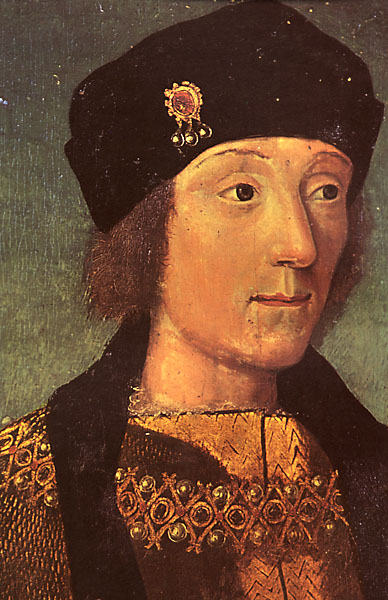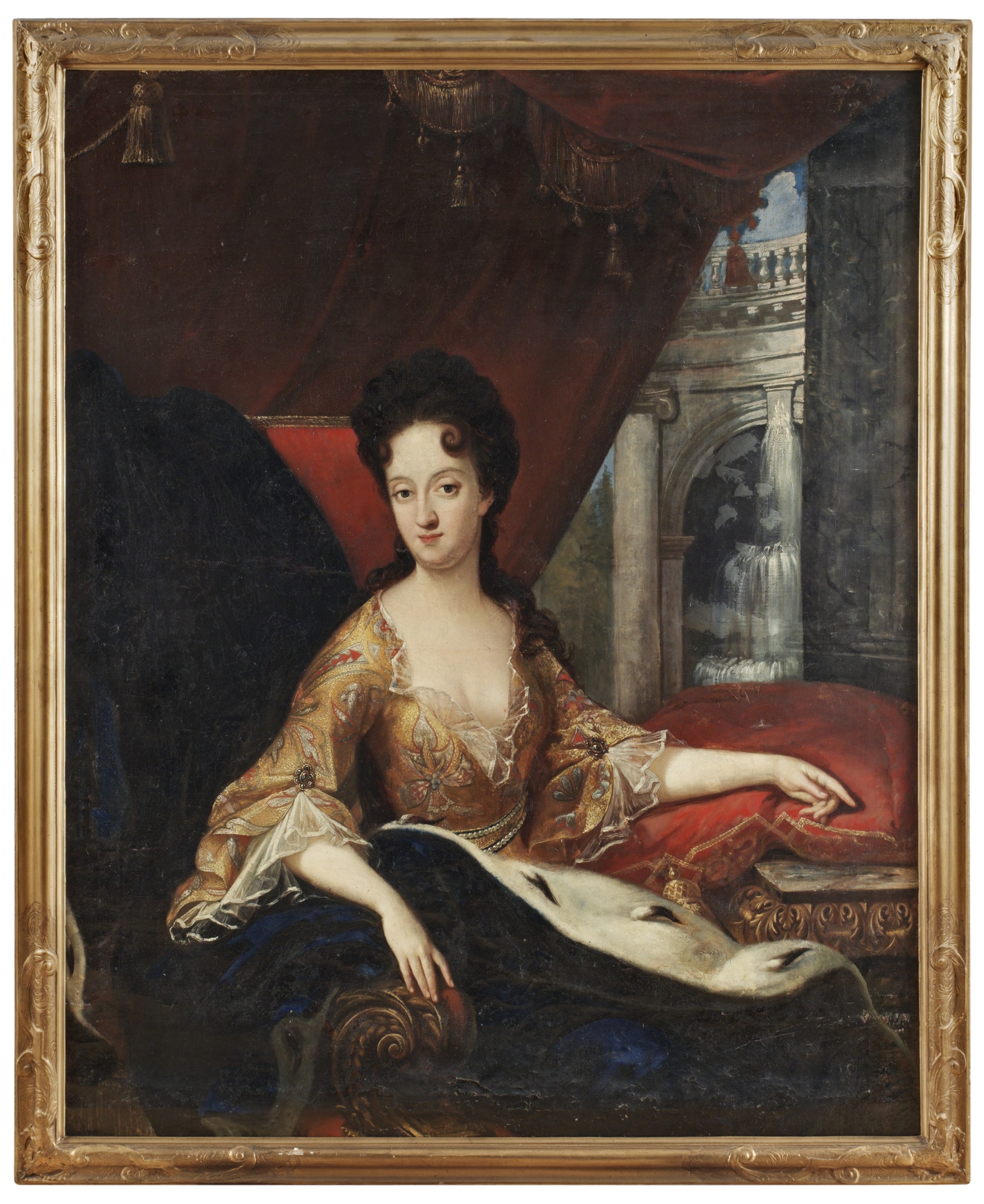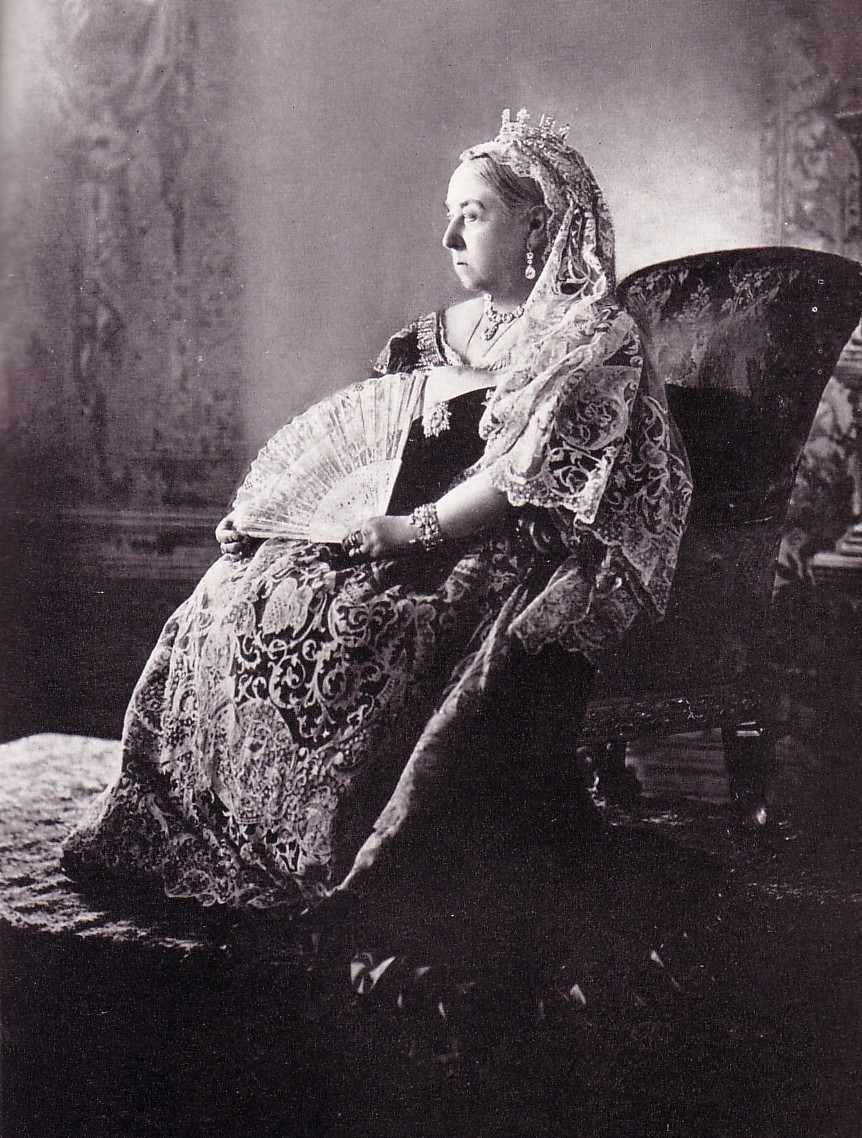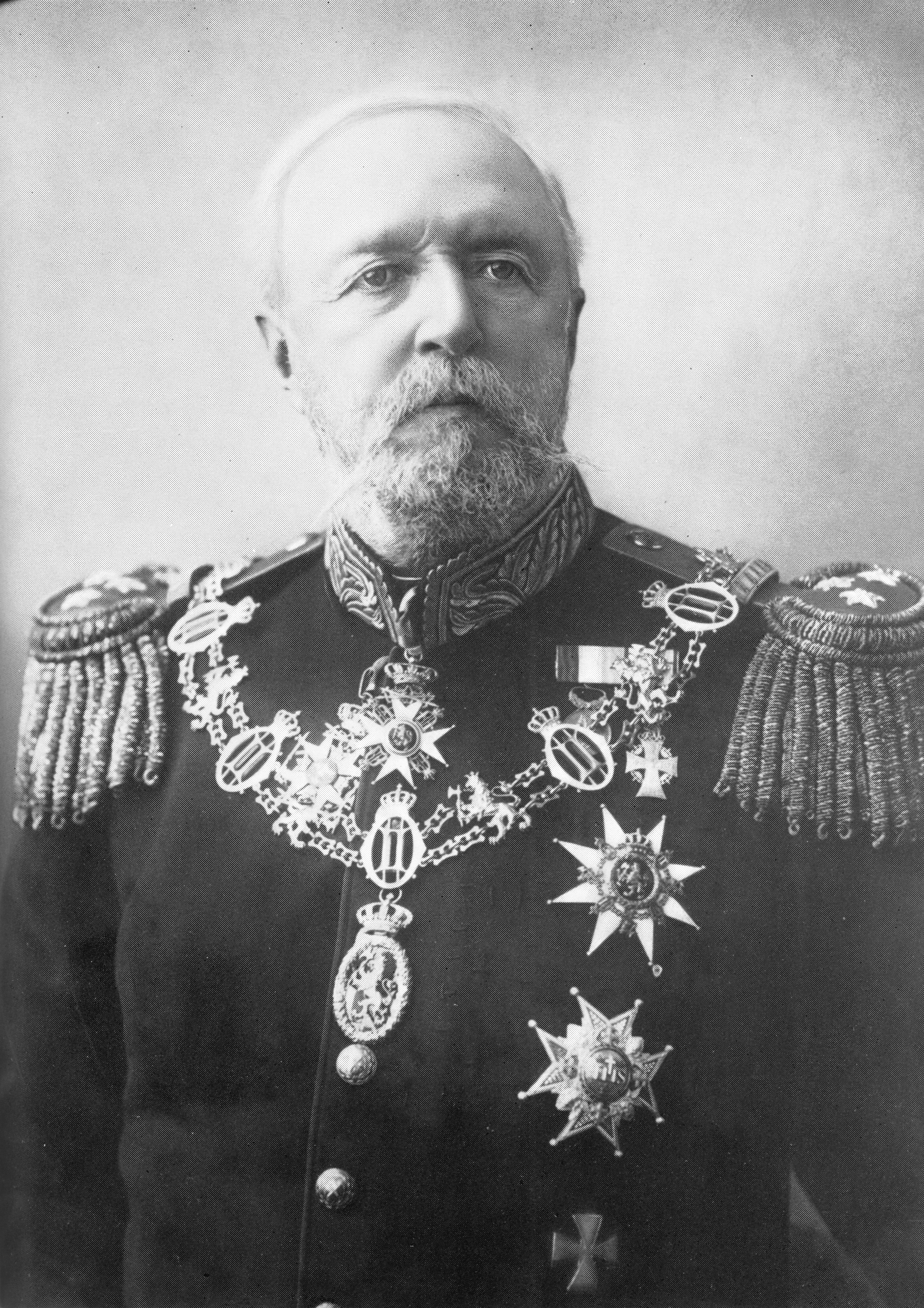© Unofficial Royalty 2024

King Henry VII of England; Credit – Wikipedia
January 28, 1457 – Birth of King Henry VII of England at Pembroke Castle, Wales
King Henry VII was the son of Edmund Tudor, 1st Earl of Richmond, who died three months before his son’s birth, leaving a 13-year-old pregnant widow Lady Margaret Beaufort. Henry’s father Edmund Tudor was the eldest child of Owen Tudor and Catherine of Valois, widow of King Henry V of England. His mother Lady Margaret Beaufort was the only child of John Beaufort, 1st Duke of Somerset and Margaret Beauchamp of Bletso. Through her father, Lady Margaret was a descendant of King Edward III of England. At the time of Henry’s birth, the Wars of the Roses, the fight for the English throne between the House of Lancaster and the House of York, was two years old. His mother was a descendant of the House of Lancaster. In 1470, after the Lancastrian King Henry VI was murdered in the Tower of London, Henry’s uncle Jasper Tudor left England for France and took his nephew Henry with him to keep him safe. In 1485, Henry Tudor sailed to Wales with a small French and Scottish force. He then marched towards England accompanied by his uncle Jasper Tudor and John de Vere, 13th Earl of Oxford. On August 22, 1485, at the Battle of Bosworth Field, the last significant battle of the Wars of the Roses, the last king of the House of York and the Plantagenet dynasty, King Richard III of England, lost his life and his crown. The battle was a decisive victory for the House of Lancaster, whose leader 28-year-old Henry Tudor, Earl of Richmond, became the first monarch of the House of Tudor. In 1486, King Henry VII married Elizabeth of York, King Edward IV’s eldest child, thereby uniting the House of York and the House of Lancaster. Henry and Elizabeth had seven children including King Henry VIII of England. Through their daughter Margaret Tudor, they are the ancestors of the British royal family and many other European royal families.
Unofficial Royalty: King Henry VII of England
January 28, 1547 – Death of King Henry VIII of England at Whitehall Palace in London, England; buried at St. George’s Chapel at Windsor Castle in Windsor, England
Henry VIII was the son of King Henry VII of England and Elizabeth of York, daughter of King Edward IV of England. Henry and his siblings represented the merging of the Lancasters and the Yorks who fought for power during the Wars of the Roses. King Henry VIII is famous for having six marriages. All three of his surviving children became monarchs of England. Henry’s disagreement with Pope Clement VII about an annulment for his first marriage to Catherine of Aragon led Henry to initiate the English Reformation, creating an independent Church of England, free from the pope’s authority. Henry expanded royal power during his reign. He frequently used charges of treason and heresy against those who disagreed with him. Those accused were often executed without a formal trial through bills of attainder. Henry’s political goals were achieved through the work of his chief ministers, some of whom were banished or executed when they fell out of his favor. As he aged, Henry became severely overweight and his health suffered. His health issues certainly hastened his death at the age of 55. Henry had made plans for a magnificent tomb but they were never carried out. He was buried in a vault at St. George’s Chapel at Windsor Castle in Windsor, next to Jane Seymour, the wife who gave him a son. In 1649, the remains of the beheaded King Charles I were buried in Henry and Jane’s vault.
Unofficial Royalty: King Henry VIII of England
January 28, 1768 – Birth of King Frederik VI of Denmark and Norway at Christiansborg Palace in Copenhagen, Denmark
Frederik VI was the only son and the eldest of the two children of King Christian VII of Denmark and Norway and his and Caroline Matilda of Wales, the sister of King George III of the United Kingdom. Frederik’s father King Christian VII suffered from mental illness. His ill-treated mother Caroline Matilda had an affair with physician Johann Friedrich Struensee. After the affair was discovered Struenss was executed and Caroline Matilda was imprisoned in a castle and never saw her children again. In 1790, Frederik married his cousin Princess Marie of Hesse-Kassel. Frederik and Marie had eight children but unfortunately, six of them, including two boys, died in infancy. Only two daughters survived and both daughters had childless marriages. In 1808, 1808, when his father died, Frederik became King of Denmark and Norway. After the French defeat in the Napoleonic Wars in 1814 and the loss of Norway, Frederik became more authoritarian and reactionary, giving up his former liberal ideas.
Unofficial Royalty: King Frederik VI of Denmark
January 28, 1845 – Death of Elizabeth Mikhailovna of Russia, Duchess of Nassau, first wife of Adolphe of Nassau, the future Grand Duke of Luxembourg, in childbirth at Castle Biebrich in Wiesbaden, Duchy of Nassau, now in Hesse, Germany; buried at the Russian Orthodox Church of Saint Elizabeth in Wiesbaden
Elizabeth was the daughter of Grand Duke Michael Pavlovich of Russia and Princess Charlotte of Württemberg (Grand Duchess Elena Pavlovna). Her paternal grandparents were Paul I, Emperor of All Russia and his second wife Sophie Dorothea of Württemberg (Empress Maria Feodorovna of Russia). In 1844, 17-year-old Elizabeth married 26-year-old Adolphe, Duke of Nassau, the future Grand Duke of Luxembourg. The couple was delighted when Elizabeth became pregnant with their first child, but the happiness did not last. On January 28, 1845, after a very difficult labor, 18-year-old Elizabeth died giving birth to a daughter who did not survive the birth. With the blessing of Elizabeth’s uncle Nicholas I, Emperor of All Russia, the grief-stricken Adolphe used Elizabeth’s dowry to build the Russian Orthodox Church of Saint Elizabeth in Wiesbaden where Elizabeth and her daughter are buried.
Unofficial Royalty: Elizabeth Mikhailovna of Russia, Duchess of Nassau
January 28, 1855 – Death of Adelheid of Austria, Queen of Sardinia, first wife of Vittorio Emanuele II, King of Sardinia, later King of Italy, at the Royal Palace in Turin, Kingdom of Sardinia, now in Italy; buried at the Basilica of Superga in Turin
In 1842, Adelheid married Vittorio Emanuele of Sardinia, Duke of Savoy, son of Carlo Alberto, King of Sardinia. At the time of the marriage, Adeleheid’s husband Vittorio Emanuele was heir to the Sardinian throne. The couple had eight children including Umberto I, the future King of Italy, and Maria Pia who married King Luís I of Portugal. In 1849, Adelheid became Queen of Sardinia following her father-in-law’s abdication and her husband’s accession to the throne. However, she died before her husband became King of Italy. Just days after giving birth to her last child, Adelheid fell ill after attending the funeral of her mother-in-law. She died four days later at the age of 32.
Unofficial Royalty: Adelheid of Austria, Queen of Sardinia
January 28, 1919 – Execution of Grand Duke Paul Alexandrovich of Russia, son of Alexander II, Emperor of All Russia, and three other Grand Dukes of Russia, by a firing squad at the Peter and Paul Fortress in St. Petersburg, Russia
On January 28, 1919, Grand Duke Paul Alexandrovich (58 years old), Grand Duke Dmitri Konstantinovich (58 years old), and two brothers, Grand Duke Nicholas Mikhailovich (59 years old) and Grand Duke George Mikhailovich (55 years old) were taken to the courtyard of the Fortress of Peter and Paul in St. Petersburg, Russia and executed by a firing squad. The four Grand Dukes were all first cousins as their fathers were all sons of Nicholas I, Emperor of All Russia. They were the last of the eighteen Romanovs killed as a result of the Russian Revolution. Their remains have not been found.
Unofficial Royalty: January 28, 1919 – Execution of Four Grand Dukes
Unofficial Royalty: Grand Duke Paul Alexandrovich of Russia
Unofficial Royalty: Grand Duke George Mikhailovich of Russia
Wikipedia: Grand Duke Nicholas Mikhailovich of Russia
Wikipedia: Grand Duke Dmitri Konstantinovich of Russia
January 28, 1941 – Birth of Crown Prince Susan of the Albanians, wife of Crown Prince Leka I of the Albanians, born Susan Barbara Cullen-Ward on January 28, 1941, in Waverley, a suburb of Sydney, Australia
An avid Egyptologist, Susan received a scholarship to attend Sorbonne University in France where she met Crown Prince Leka I of Albania, the pretender to the throne of Albania. He later later invited her to come to Spain where she studied tourism. The couple married in 1975 and had one son. After living in exile since 1939, the royal family was invited to return to Albania in June 2002. Arriving with her husband, son, and mother-in-law Queen Geraldine, Susan continued her work for improving conditions for the Albanian people and remained steadfast in her unyielding support for her husband’s efforts. Sadly, just two years later, she died after having been diagnosed with lung cancer.
Unofficial Royalty: Crown Prince Susan of the Albanians
January 28, 1950 – Birth of King Hamad bin Isa Al Khalifa of Bahrain, in Riffa, Bahrain
King Hamad bin Isa bin Salman Al Khalifa of Bahrain is the eldest son of Emir Isa bin Salman Al Khalifa of Bahrain and his wife, Hessa bint Salman Al Khalifa. Hamad was a driving force in establishing the Bahrain Defense Force and was appointed Commander-in-Chief. He later served as Minister of Defense and Deputy Head of the Al Khalifa Family Council. An avid helicopter pilot, Hamad was instrumental in establishing the Bahrain Air Force. Upon his father’s death on March 6, 1999, he became the Emir of Bahrain. Three years later, in 2002, he elevated the Emirate to a Kingdom and proclaimed himself the first King of Bahrain.
Unofficial Royalty: King Hamad bin Isa Al Khalifa of Bahrain
This article is the intellectual property of Unofficial Royalty and is NOT TO BE COPIED, EDITED, OR POSTED IN ANY FORM ON ANOTHER WEBSITE under any circumstances. It is permissible to use a link that directs to Unofficial Royalty.



















